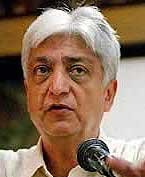Achieving global excellence through IT
Azim
Premji
01 October 2005
Global excellence is a moving target. Companies have to constantly innovate and reduce costs. On the one hand, they must not only develop expensive new features to please consumers but also improve their environmental and safety standards, knowing fully well that cannot expect a simultaneous increase in their price realisation. Customers always want something more for less.
 Achieving
excellence, which can meet global standards and expectations,
in not a new concept for India any more. Today, there
are at least 20 firms doing well in the global market.
Tata Motors sells its Indica cars to Rovers factory in
UK, Bharat Forge is the world''s second largest manufacturer
of forgings. Sundaram Fasteners has been ranked number
one supplier by GM 3 years running for its zero defects
which bear testimony to the world class capability here.
Achieving
excellence, which can meet global standards and expectations,
in not a new concept for India any more. Today, there
are at least 20 firms doing well in the global market.
Tata Motors sells its Indica cars to Rovers factory in
UK, Bharat Forge is the world''s second largest manufacturer
of forgings. Sundaram Fasteners has been ranked number
one supplier by GM 3 years running for its zero defects
which bear testimony to the world class capability here.
Automobiles and auto components are high value industries. Between 1998-99 and 2003-04, India''s export of passenger cars increased nearly five fold to 1, 26,000 units and two wheelers from 1,00,000 units to 2,65,000 units. For the first time, the industry exported auto components exceeding one billion US dollars.
According to McKinsey, India could capture up to $25 billion of this amount by 2015, to become, along with China, Mexico, and Thailand, one of the developing world''s top sourcing bases.
Apart from low costs, India''s auto components industry has the advantage of skills in process, product, and capital engineering owing to its long manufacturing history and higher-education system. Also, India''s advanced tooling and machining industry makes it possible to produce capital equipment locally in a less expensive manner.
In the pharmaceutical industry, firms like Ranbaxy, DRL bring out affordable drugs to the world. Ranbaxy ranks ninth globally in the generics drugs category and had bagged the AIDS research funded by former US president Bill Clinton. Even in the entertainment industry, India is making its mark.
